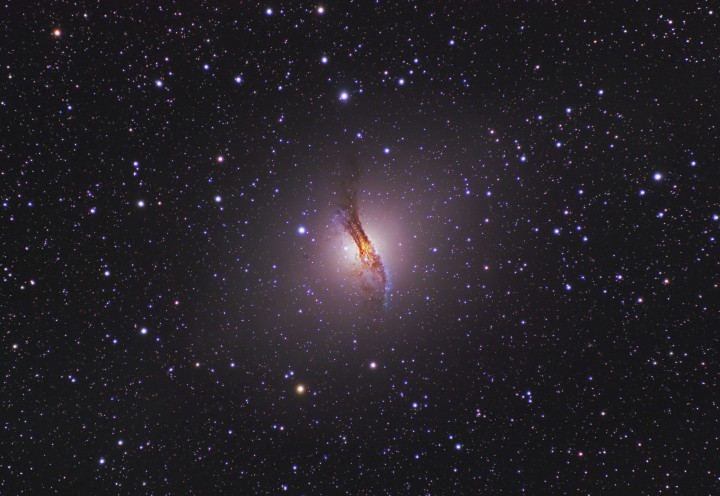Credit & Copyright: Robert Gendler and
Stephane Guisard
Explanation:
At the center of
this
sharp skyscape, Centaurus A seems to be
a fantastic jumble of old yellow stars, young blue star clusters,
and imposing dark dust lanes.
Spanning over 60,000 light-years,
the
peculiar elliptical galaxy is
apparently the result of a collision of two otherwise
normal galaxies.
The left over cosmic debris is steadily being consumed by a
black
hole with a billion times the mass of the Sun which lies
at the center of Centaurus A.
It's likely that such
black
hole central engines generate the
radio, X-ray, and gamma-ray energy radiated
by Centaurus A and other
active
galaxies.
For an active galaxy Centaurus A
is close, a mere 10 million
light-years away,
and is well-studied by
earthbound
astronomers.
Check out:
Venus and Saturn in tonight's evening sky.
1999 2000 2001 2002 2003 2004 2005 2006 2007 2008 2009 2010 2011 2012 2013 2014 2015 2016 2017 2018 2019 2020 2021 2022 2023 2024 2025 |
Январь Февраль Март Апрель Май Июнь Июль Август Сентябрь Октябрь Ноябрь Декабрь |
NASA Web Site Statements, Warnings, and Disclaimers
NASA Official: Jay Norris. Specific rights apply.
A service of: LHEA at NASA / GSFC
& Michigan Tech. U.
|
Публикации с ключевыми словами:
active galaxy - black hole - активная галактика - черные дыры - Центавр A
Публикации со словами: active galaxy - black hole - активная галактика - черные дыры - Центавр A | |
См. также:
Все публикации на ту же тему >> | |
